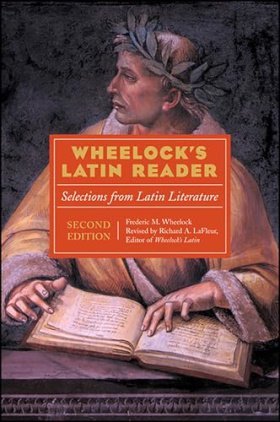nemus:grove.
203. amoenus: charming, delightful.
208. reficiant: reficere, to repair, restore, refresh.
209. virgines: acc.
assumant: assumere,to take to oneself.
211. prata: pratum, meadow.

Saint Gregory (Pope Gregory I) Codex 2907, Italian manuscript Biblioteca Augusta, Perugia, Italy
Alinari/Regione Umbria/Art Resource, NY.
CARMINA BURANA
The Carmina Burana (“Songs of Beuern”), so-called from their preservation in a single 13th-century manuscript from the Bavarian monastery of Benedictbeuern, is a collection of 228 poems (many of them songs with musical notation) and six religious plays; the manuscript was rediscovered in 1803 and first published in 1847. The poems were composed by numerous, mostly anonymous wandering scholars and students (the so-called goliards) during the 12th century; the themes are variously satiric, amatory, and celebratory, including some carousing drinking songs; many are quite beautiful, others raucously humorous. Some were composed in German or Occitan (a Romance dialect of southern France), but most are in Latin and characterized by all the spontaneity and naturalness of a living language, as the goliards recorded both the joyous and the melancholy aspects of their student life. While some of the poems employ classical meters, including the dactylic hexameter, and are reminiscent of authors like Ovid, most (including all three selections below) are rhyming lyrics with accentual meters that have much in common with modern verse; the work gained renewed popularity in the 20th century through the selection made by the German composer Carl Orff for his oratorio and ballet, the Carmina Burana, produced in 1937 and available in numerous recordings today.
Ver Redit
Carmina Burana 137. The return of spring and love; the metrical pattern is three trochees in lines 1, 3, 5, 7, and 8 of each stanza and two iambs in the rest; the rhyme scheme is ABABCDEED.
Ver redit optatum
Cum gaudio,
Flore decoratum
Purpureo;
200 Aves edunt cantus
Quam dulciter;
Revirescit nemus;
Cantus est amoenus
Totaliter.
205 Iuvenes, ut flores
Accipiant
Et se per odores
Reficiant,
Virgines assumant
210 Alacriter
Et eant in prata
Floribus ornata
Communiter.
214. taberna: tavern.
215. humus: i.e., mors.
216. ludum: here, gaming, gambling; likewise ludunt below.
properamus: properare,to hurry.
217. insudamus: insudare, to sweat at, sweat over.
219. nummus: coin, money; with pincerna (cupbearer, host) a PERSONIFICATION.
220. hoc est opus: refers to quid agatur in taberna, this is the business.
ut quaeratur…audiatur (221):to be looked into (and)…to be….
224. morantur: morari, to delay, loiter, spend time.





















